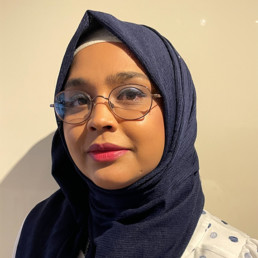
Written by Tamanna Abdul-Karim
Tamanna Abdul-Karim is Assistant Headteacher responsible for Literacy, Equality and Diversity in an inner city school in Birmingham. She has completed the NPQLL and Masters in Educational Leadership and Management /Level 7 Apprenticeship with the National College of Education. She is an English teacher at heart and her desire to create a sense of equality and justice motivates her. It is through education, she hopes to create impact and leave a meaningful legacy.
The concept of “mirrors, windows and sliding doors,” introduced by Dr. Rudine Sims Bishop, has become a foundational framework in conversations around diversity in children’s literature and multicultural education. In her metaphor, mirrors reflect readers’ own identities and lived experiences, windows offer insights into lives different from their own, and sliding doors allow readers to step into those other worlds, fostering deeper engagement and understanding.
This framework is not only relevant in literature — it has transformative potential across all aspects of school life. From curriculum design and cultural representation to enrichment opportunities and even staff recruitment, it offers a way to embed inclusion and equity into the very fabric of educational settings. When embraced authentically, it cultivates a culture where every student is seen, valued, and empowered.
However, if not approached thoughtfully, these mirrors and windows can distort reality. They can perpetuate stereotypes, invisibilise complexity, and contribute to feelings of alienation, shame, or disconnection — particularly for students from minoritised backgrounds.
A Personal Reflection: Distorted Mirrors, Fogged Windows
As a child of Bangladeshi heritage growing up in inner-city Birmingham in the 1990s, my school experience offered only two narratives about my country of origin: that it was poor and that it flooded. While these facts are not untrue, they painted a one-dimensional picture that deeply distorted both my self-image and my understanding of my heritage.
The mirror I was presented with reflected famine-stricken children, submerged villages, and chaotic streets. The window offered a view steeped in deficit — one that suggested my background was something to be downplayed, or even disowned. As a result, I internalised a sense of shame. I learned to code-switch early: Bengali at home, English at school. I adapted the way I spoke, behaved, even the way I ate — compartmentalising parts of my identity to belong.
What my schooling failed to reveal was a far richer, more complex history. I didn’t learn that before colonial rule, Bengal was one of the most prosperous regions in the world — a hub of culture, trade, and innovation. I wasn’t taught about the globally coveted Jamdani textiles, or that Dhaka was once one of the busiest ports on earth. There was no mention of how British colonial policies contributed to devastating famines, or how Bangladesh achieved independence through extraordinary resilience and sacrifice.
This erasure had consequences. It shaped how I saw myself — and how I believed others saw me. It taught me that some stories are celebrated, while others are sidelined.
Who Holds the Mirror? Who Builds the Frame?
This experience highlights a deeper issue: representation is not just about inclusion, but about how people, places, and histories are portrayed — and who gets to do the portraying.
We must ask: Who is holding up the mirror? Whose perspective shapes the window? What frames are we using to present narratives of identity, culture, and heritage?
It is not enough to simply provide visibility. We must examine the structures — the frames and lenses — through which these representations are filtered. If the frame itself is biased or incomplete, then the images it presents will be equally flawed.
A Call to Educators: From Representation to Reimagination
Educators carry immense responsibility. We are not only curators of knowledge — we are architects of perception. Every decision we make about curriculum, literature, resources, or enrichment shapes the mirrors and windows we offer to our students.
This work requires deep reflection. We must interrogate our own biases, challenge inherited narratives, and resist the temptation to present simplified or tokenistic views of cultures and communities. We need to move beyond surface-level inclusion to truly equitable representation.
This begins with unlearning — with a willingness to revisit what we’ve been taught, and to seek out the histories, voices, and perspectives that have long been marginalised.
Because when children see themselves reflected fully — in all their richness and complexity — they stand taller. And when they’re given a window into the full humanity of others, they grow kinder, more curious, and more connected.
Let us hold up better mirrors. Let us open clearer windows. Let us build sliding doors that do not just invite exploration, but also affirm belonging.

